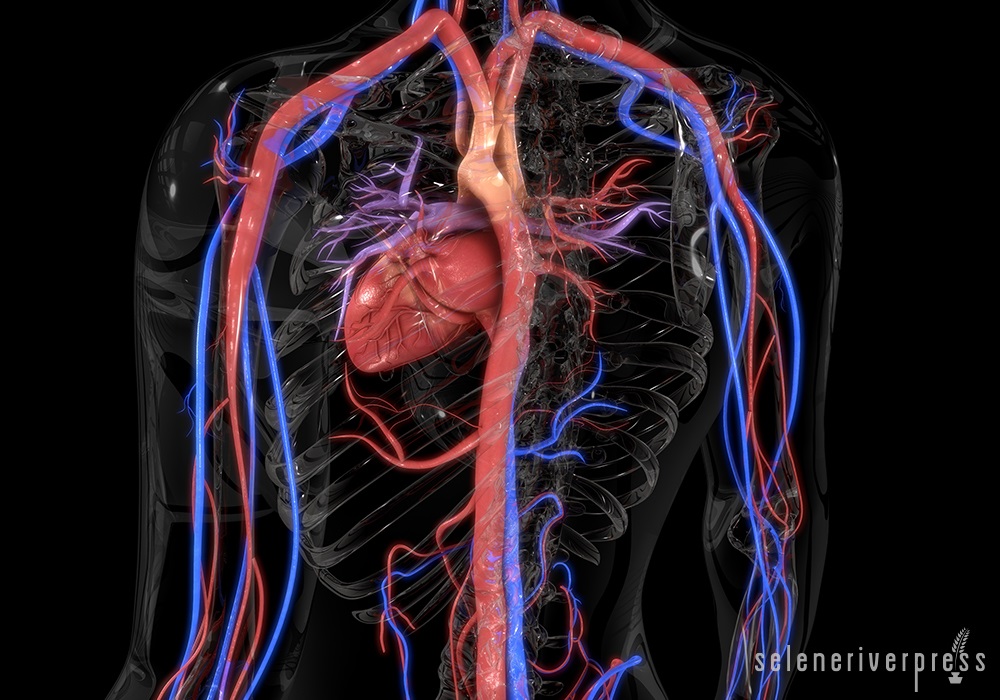Are you ever surprised by some of the choices your closest family members or friends make in the attempt to avoid supposedly artery-clogging cholesterol?
In recent conversations with friends who know I’m a retired nutritionist with access to natural, effective techniques to staying healthy—and, of course, a broad-based knowledge of foods and supplements that can keep our arteries in tip-top shape—I sadly discovered that they’d been lured, like so many others, into believing that if they could only lower their cholesterol levels, they could escape the effects of atherosclerosis (hardening of the arteries), heart attacks, and strokes. All I can say is wrong, wrong, wrong!
As we discussed their methods, I learned that the most popular “remedy” is the use of statins. But according to Dr. Mercola and other professionals, statins have some serious side effects.
Another person I spoke with had been told by his doctor that his cholesterol was 195, and he should reduce it to 175! But too low a cholesterol level can cause untold health problems. This person wanted a natural method for lowering his cholesterol, and he’s now taking red yeast. However, this too can bring about serious side effects.
It bothered me greatly to know that both of these cases will ultimately lead to negative results. Nevertheless, since they hadn’t asked me for my recommendations, I didn’t want to get into the crosshairs of their personal health choices. Instead, I thought it better to consult with some of my favorite holistic practitioners to help set the record straight for anyone seeking a natural way to reset and cleanse the arteries and keep them healthy for the long term. And with no negative side effects!
What follows is information from Joseph Antell, a holistic practitioner, master herbalist, and Standard Process Mentor. The topics from our conversation that I will cover here are all about the role the following elements play in maintaining healthy arteries:
- Amino acids
- Whole food vitamin C
- Whole food vitamin B
- Soybean lecithin (not soybean oil)
- Inflammation and stress
#1. The Role of Amino Acids in Healthy Arteries
Antell explains that, first and foremost, we must understand what arteries are made from in order to follow his recommendations. So, what are arteries made of? The simple answer is that arteries are made from elastin and collagen. These two components keep the arteries flexible (like cooked spaghetti) rather than stiff and hard, which often happens as we age, primarily due to the lack of nutrients I describe below.
To achieve healthy arteries, we must include the twenty-two amino acids in our diet as they are the building blocks of complete protein. Many of us have heard of amino acids, but, sadly, few of us understand why they’re so important.
Nine of those twenty-two amino acids are essential amino acids. Unfortunately, high-heat cooking destroys certain amino acids. It’s therefore important to find a surefire way to get these nine essential amino acids—emphasis on essential—into our daily diet.
Antell recommends Protefood, one of the most outstanding whole food supplements made by Standard Process. Protefood contains the essential amino acid known as lysine. It’s needed for proper collagen formation, and it promotes both cellular health and healthy protein metabolism. (See these key points regarding protein intake from the Weston A. Price Foundation.)
Personal note: You’ll find two of my favorite raw food recipes high in amino acids at the end of this blog post, along with some great food suggestions from Dr. Bruce Fife’s latest book, Ketone Therapy.
#2. The Role of Whole Food Vitamin C in Healthy Arteries
A common misunderstanding is that ascorbic acid is vitamin C. However, ascorbic acid is an isolated, manmade chemical. It should not be mistaken for a vitamin complex containing all the vitamin C constituents.
In fact, ascorbic acid may have serious side effects. For healthy arteries, the role of whole food vitamin C is crucial. Antell relates that, for the most part, “We are extremely deficient in vitamin C.”
Could this be because so many people who take ascorbic acid think that they’re taking true vitamin C?
Whole food vitamin C is essential as it knits, or holds together, the protein, therefore keeping the collagen from unraveling. The unraveling of the collagen matrix is a form of scurvy. It can be related to the preservation of the arteries and is a major reason for diverticulitis and other collagen-deficient disorders.
Antell also suggests eating raw mushrooms and raw potatoes since they’re both high in whole food vitamin C. (See my recent post on raw potatoes.) He also recommends Cyruta Plus to help prevent strokes. (Learn more about Cyruta Plus and stroke prevention here.) All of these products are key to preventing collagen from unraveling and weakening our precious arteries.
#3. The Role of Whole Food Vitamin B in Healthy Arteries

Many of us know that the B vitamins are generally prescribed for nervous disorders, and I won’t dispute that fact. However, what many of us don’t know is that there are two different groups of B vitamins: vitamin B complex and vitamin G complex. In whole foods, B vitamins are configured differently from each other, so they exert a different influence with the same members in different proportions. Respecting that, Standard Process formulates two different B complexes for different uses: Cataplex B and Cataplex G.
Cataplex B supports energy production in all the cells, and through nerve stimulation it tones the heart and constricts vessels for faster velocity of flow.
Cataplex G encourages healthy parasympathetic nerve function, supports brain and nervous system function, and allows for the relaxation of the arteries, increasing circulation.
#4. The Role of Soybean Lecithin (Not Soybean Oil) in Healthy Arteries
Because of the dangers regarding the negative effects that have come out in the past years about unfermented soy foods and soybean oil, there is now a great deal of misunderstanding about the use of the Standard Process product Soybean Lecithin. It seems like the moment we see or hear the word “soybean,” we automatically associate it with the negative reports of soybean oil and unfermented soy foods.
Let me assure you that Soybean Lecithin is in no way the same thing as soybean oil! Soybean Lecithin contains no soybean phytoestrogens—it’s truly just the pure, therapeutic-grade lecithin available in soybean oil. While it’s true that soybean oil contains phytoestrogens, those are removed in the process of producing Soybean Lecithin. Trust me when I say that it’s a lifesaver!
Soybean Lecithin contains phosphorous to help balance calcium in the blood and choline to help balance excess fat in the blood. Most importantly, it’s the perfect solution to keep excess cholesterol from sticking to the arteries, and it helps balance blood viscosity.
#5. The Role of Inflammation and Stress in Healthy Arteries
Ah, yes, here are two of my favorite subjects that I often write about. It would require more than one or two paragraphs to explain how inflammation and stress relate to your arteries and overall well-being. That said, I invite you to read these two blog posts and take a serious look at how inflammation and stress affect all areas of life:
“The Longevity Secret, Part I” reveals new and interesting facts that I’d not seen in other articles related to stress. If you find this information helpful, don’t forget to read Part II.
“Inflammatory Foods: How to Replace These Pain-Producing Poisons.” There are tons of anti-inflammatory supplements on the market, but what happens when taking them still leaves you with a sense of spending so much and receiving so little? This was the sole reason I wrote this particular post. It may save you money and help you stop inflammation in its tracks! Enjoy.
Raw Recipes Rich in Amino Acids
Raw Milk and Cream Shake
—Adapted with permission from Kim Schuette at Biodynamic Wellness. Serves one.
For this shake, Kim Schuette recommends that those who follow the GAPS diet should omit raw cream and instead use sour or piima cream. Ideally, the best option for supporting hormone health would be raw or sour/piima cream. You can make cultured cream from mesophilic, room-temp cultures, such as viili, piimä, and filmjölk, which are available at Cultures for Health.
Ingredients
2–4 oz. raw organic cream (or Artisana coconut cream for a nondairy option)
3–6 oz. raw milk, kefir, or full-fat yogurt (optional), or coconut milk
1 cup berries, fresh or frozen (optional)
2–3 raw organic egg yolks
1 tablespoon or more raw liver, frozen at least 14 days prior to use
1 teaspoon raw honey
1 tablespoon organic, unrefined coconut oil
Instructions
- Place all ingredients in blender or food processor and mix until thoroughly combined. Enjoy!
Raw Milk and Calcifood Shake
—This Traditional Cook original recipe provides all of the nine essential amino acids. Serves one.
Ingredients
¼ cup crispy nuts (Nourishing Traditions, p. 513)
1 cup whole raw milk
1 tablespoon Calcifood Powder
⅓ cup berries of your choice
Instructions
- Finely grind crispy nuts in Vitamix or blender.
- Add all remaining ingredients and blend lightly to combine.
Afterthoughts from the Traditional Cook
In closing, I want to emphasize that this post only touches on the basics of a very complex subject, and you will no doubt improve you artery health by following the information within these recommendations.
If you’re practitioner or a truly health-loving person who desires a more in-depth understanding of these issues, I strongly recommend Dr. Michael Gaeta’s critical assessments of Mark R. Anderson’s annual Back to School for Doctors seminars (2015 and 2016), available as MP3s or through Vimeo on Demand. All of Mark Anderson’s original slides, notes, and reference materials are included with your purchase.
Cardiovascular: Performance, Endurance, Maintenance—A Review of Mark R. Anderson’s Back to School for Doctors 2015 by Dr. Michael Gaeta
The Triad of the Heart: Rate, Rhythm, Tone—A Review of Mark R. Anderson’s Back to School for Doctors 2016 by Dr. Michael Gaeta.
Maria Atwood, CNHP
[xyz-ihs snippet=”End-Authors-Note”]Note from Maria: I am a Certified Natural Health Professional, CNHP, not a medical doctor. I do not diagnose, prescribe for, treat, or claim to prevent, mitigate, or cure any human diseases. Please see your medical doctor prior to following any recommendations I make in my blogs or on my website.
Images from iStock/7activestudio (main image), ttsz (brain), morisfoto (food).





